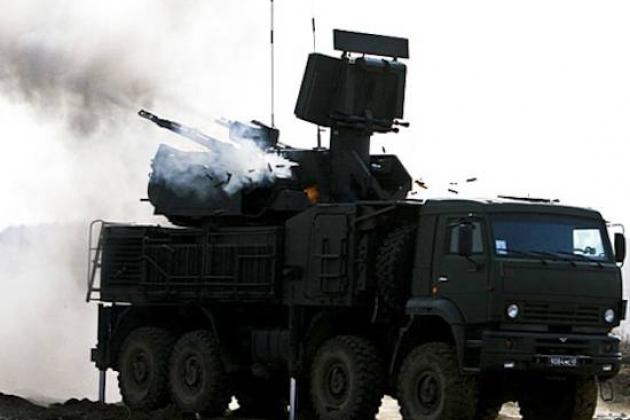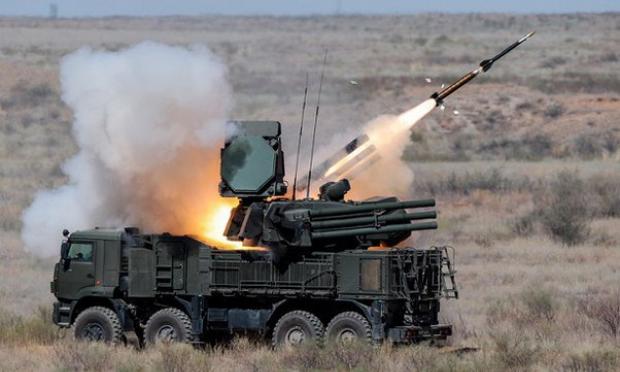The Pantsir missile system is a family of self-propelled medium-range surface-to-air missiles and anti-aircraft artillery systems.
It is designed to provide air defense of military, industrial and administrative facilities against aircraft, helicopters, precision munitions, cruise missiles and UAVs as well as to provide additional protection to air defense units against enemy air attacks using precision munitions, especially at low to extremely low altitudes.
According to a report by TASS, the Russian Federation has successfully completed the improvement of the Pantsir-S anti-aircraft missile and gun system (ZRPK), using the experience gained during the war with Ukraine. The information comes from sources within the "High-precision complexes" of the state company Rostec.

The new "Pantsir-S" has been adapted to combat modern missile systems, which recently appeared in the arsenal of the Armed Forces of Ukraine (AFU). This includes Western-made multiple launch rocket systems (MLRS) such as HIMARS.
"The Pantsir-S anti-aircraft missile and gun system was modified taking into account the experience of combat use. All the necessary improvements were successfully implemented," reports Rostec.
The Ministry of Defense of the Russian Federation previously reported that the Pantsir-S daily locates and hits several targets in the "theaters" of the war. With the help of the detection system, the complex is able to identify a wide range of aerial targets, including MLRS missiles, cruise and ballistic missiles, helicopters, aircraft and unmanned aerial vehicles.
This news confirms Russia's continuous efforts to modernize and improve its military equipment and technology in response to changing conditions on the battlefield, and in the future the Russian military may receive data on the signatures of the vast majority of foreign UAVs, missiles and munitions.

The Russian defense industry has announced the start of mass production of its new weapon, the S-80FP Broneboyshchik unguided missile, designed for aircraft and attack helicopters. They noted that, the new type of ammunition is already in service and has acquired its first customer.
This "unique" weapon, as the Russians describe it, has "5 to 6 times more firepower than all its predecessors" with a firing range of 11 km. Being an 80mm missile, the S-80FP can be mounted on B8M-1 and B8V20-A launchers.
But according to Ukrainian media, the first information about the S-80FP dates back to 2013, when the new ammunition for Russian aircraft was first presented to the public.

In addition, at that time, much more details about the missile were revealed. For starters, the stated range of 11 kilometers was later defined as "ballistic range". In other words, it is the flight distance of this missile when, the number is the same for the ordinary S-8 missile currently used by the Russian military, and the similarity in this case is similar for both.
"Older data, especially from 2013, gives us even more information. Among the lines of description, we find the following: Having retained the size and weight parameters of the predecessor (length about 1.5 meters, launch weight 17 kg), the development of weapons manufacturers from Tula has twice the mass of explosive material than its first modifications S-8," the media reports.
That is, somehow the warhead of the S-80FP with twice the weight of the first versions of the S-8 (created in the 1960s), within these 10 years turned into a warhead with an explosive power 5 to 6 times increased.
Nevertheless, the S-80FP missile with its total weight of 17 kg and its warhead of 9.5 kg still has some unique features that should not be forgotten. This rocket uses a new type of solid fuel, reducing the proportion of weight taken up by the fuel tank.

This change also enabled engineers to equip the rocket with an electronic fuse. Originally, the idea was that the missile would be capable of being fired either by impact, by proximity to the target, or by delay. However, due to the specifications published by the manufacturer, only the impact and time delay options were retained in the development process.
“Is the S-80FP Broneboyshchik a conceptually new or a superior weapon? Is it an additional threat to Ukrainian forces? Definitely no. Also, the fact that it took up to 10 years to start production implies that there were some problems that slowed down progress,” the media reports.
The mass use of the S-80FP by the Russian military is certainly a matter of perspective in the near future. But in some limited quantities, they may be picked up by Russian air units.



